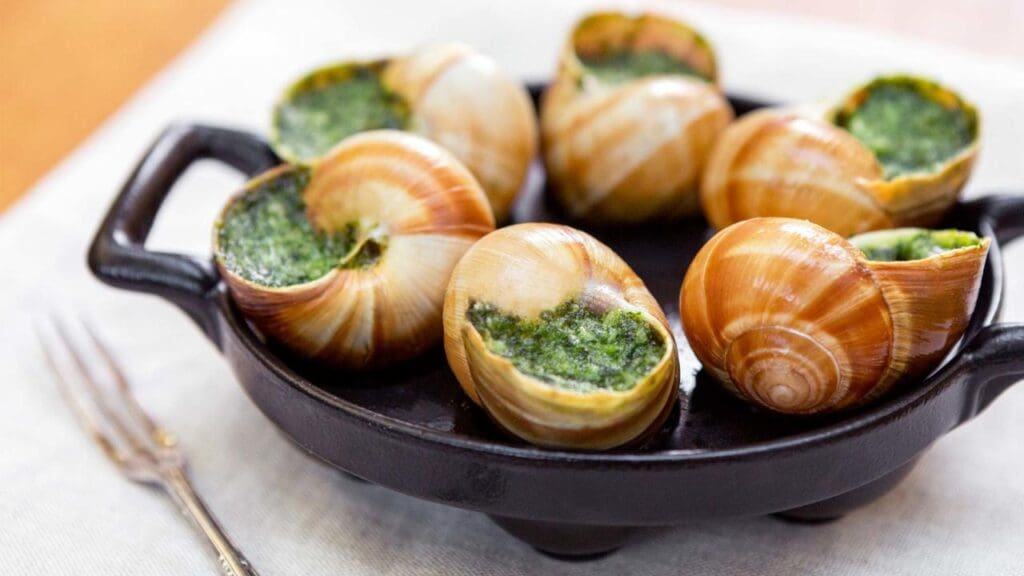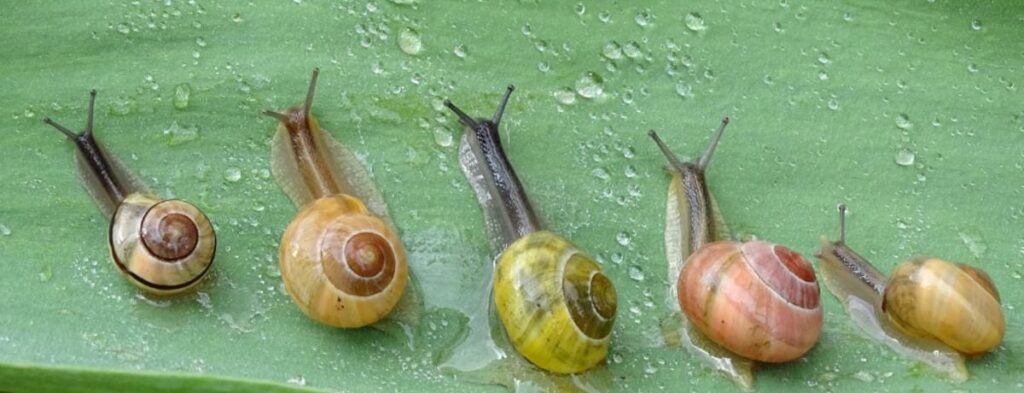Gross Facts About Escargot: What You Might Find Unappetizing
Escargot—cooked land snails—are celebrated as a delicacy in French cuisine, often linked to elegance and refinement. Yet, beneath the sophisticated presentation, there are some unsettling facts that might prompt you to rethink that snail on your plate. Whether you enjoy this gourmet dish or not, these intriguing details could make you feel uneasy.
1. Escargot: A Fancy Dish with Slimy Origins
Despite its status as an elegant dish, escargot is simply snails prepared with garlic butter and herbs. The sophisticated presentation cannot conceal the fact that these snails have their own natural coating: mucus. This slimy layer can be rather unappealing, particularly for those who are not used to the experience of eating something that’s been covered in its own bodily secretions.
2. The Snail Preparation Process: Not So Appetizing
The path from garden to gourmet entails a rather unappetizing process. To prepare escargot, snails are typically starved for several days, sometimes offered only herbs or plain flour during this time. This starvation period is intended to cleanse their digestive systems, but it may appear quite grotesque to those who are unfamiliar with the practice. Observing the snails go through this preparation process might not be suitable for the faint of heart.
3. High Mucus Content
Garden snails produce a significant amount of mucus, a gelatinous substance that is crucial for their movement and protection. Although the preparation process does involve rinsing off some of this slime, traces often linger. For many, the thought of consuming something that secretes a thick, slimy substance can be off-putting. The experience of eating a food with such high mucus content may not align with everyone’s idea of gourmet dining.
In conclusion, while escargot is esteemed in haute cuisine, its preparation and inherent characteristics might give even the most adventurous eaters pause.

Escargot might be seen as a refined French delicacy, but there’s more to these cooked land snails than their fancy presentation. If you’ve ever wondered what’s really involved in this gourmet dish, prepare yourself for some rather unappetizing details.
4. Snails: The Garden Pests Turned Gourmet
Ironically, the snails you’re enjoying as a delicacy are often the same pests gardeners despise. These creatures commonly feed on plants and vegetables, causing significant damage in gardens. So, when you’re indulging in escargot, you might just be savoring a pest that many people go to great lengths to eradicate from their gardens.
5. Cooking Snails Thoroughly Is Essential
Escargot can harbor parasites like rat lungworm, which can be dangerous if the snails are undercooked. To mitigate the risk of contracting this disease and other foodborne illnesses, snails must be cooked at temperatures above boiling point. This concern adds an extra layer of unease, especially when eating escargot at a restaurant where thorough cooking is crucial for safety.
6. The Unsettling Texture of Escargot
One of the most commonly cited reasons people find escargot off-putting is its texture. The snails can be both chewy and slimy, a combination that many find unappealing. Unlike shellfish, which often have a firm texture, escargot are softer and their slippery consistency can be particularly unpleasant for some diners.
7. The Cumbersome Shell Removal Process
When preparing and eating escargot, the snails are usually served in their shells. While this might seem elegant, the reality is that removing the meat from the shells can be quite laborious. Specialized tools are required, and diners often use their fingers to extract the snail meat, making the whole process somewhat cumbersome and less refined than one might expect.
8. Why Garlic Butter? To Mask the Natural Flavor
The traditional preparation of escargot involves a generous amount of garlic butter, parsley, and sometimes wine. This seasoning not only enhances the flavor but also helps mask the natural taste of the snails, which some find unpleasant. Without these rich accompaniments, escargot might be a greasy, unappetizing experience.
9. The Sound of Escargot: An Auditory Experience
Enjoying escargot is not just a matter of taste but also of sound. When diners pull snails out of their shells, they often produce slurping or squelching noises. In a quiet dining environment, these sounds can be quite off-putting, adding an audible element to the otherwise slimy and unappealing experience.
In conclusion, while escargot may be considered a delicacy, its preparation and consumption involve some rather gross facts that might make you think twice before diving into this French treat.

Gross Facts About Escargot: FAQs
1. What is an interesting Gross Facts About Escargot?
A. Escargot is often considered a delicacy, but it involves eating land snails, which are naturally slimy and must be purged before cooking.
2. Why is escargot considered fancy?
A. Escargot is considered fancy due to its historical association with French cuisine and its preparation with rich ingredients like garlic butter and herbs.
3. What are some Gross Facts About Escargot snails in France?
A. Snails have been eaten in France since Roman times and are considered a traditional delicacy, often enjoyed during holidays and special occasions.
4. What is a Gross Facts About Escargot eating snails?
A. Eating snails requires special utensils, like tongs and forks, to remove the snail meat from its shell, making it a unique dining experience.
5. Is escargot made from land or sea snails?
A. Escargot is made from land snails, primarily species like Helix pomatia, which are commonly found in gardens.
6. What are the ingredients in escargot?
A. Common ingredients include snails, garlic butter, parsley, white wine, and sometimes shallots or other herbs.
7. When was escargot invented?
A. Snail consumption dates back to Roman times, but it became popular in France during the 19th century.
8.How do you pronounce escargot?
A. Escargot is pronounced “es-kar-GOH.”
Escargot is a dish that carries an air of elegance and history, yet beneath its sophisticated exterior lies a series of rather gross facts about escargot that might make some diners think twice. From its slimy origins to the gritty preparation process, escargot’s journey from garden pest to gourmet plate is both fascinating and a little unsettling. Whether you find it repulsive or relish the delicacy, escargot remains an iconic dish that highlights the complexities of gourmet cuisine.





0 Comments